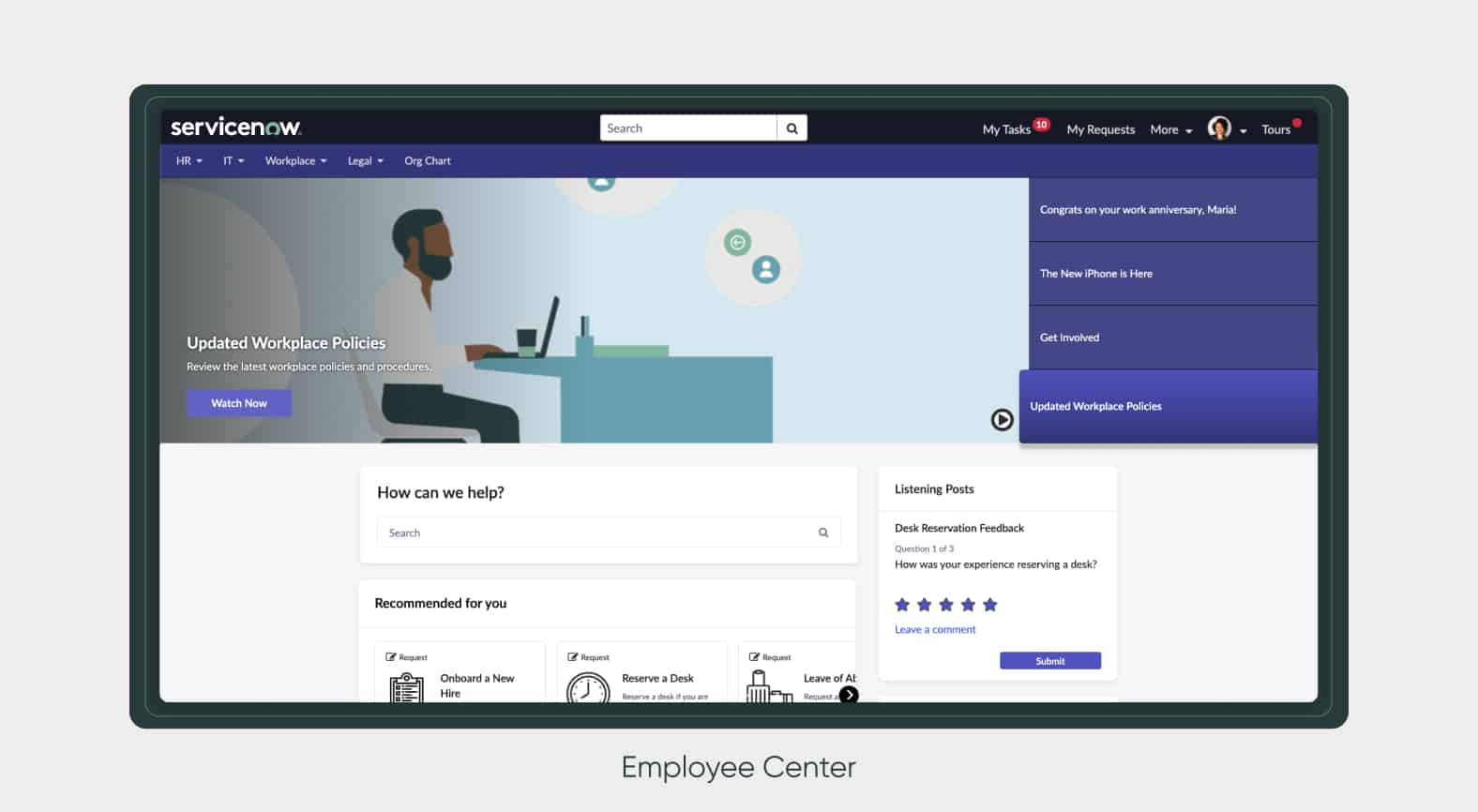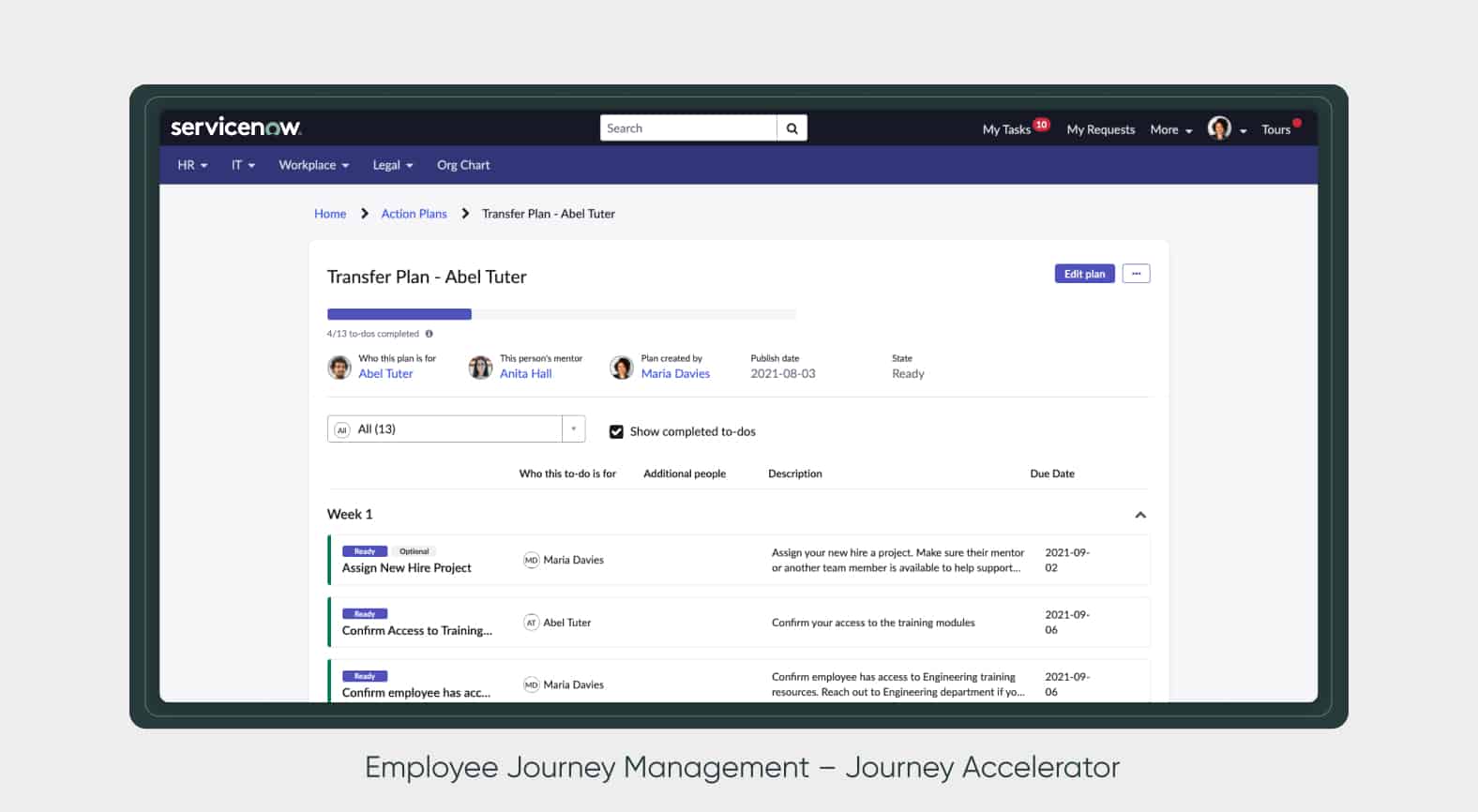ServiceNow Does It Again: Rome Release Pushes The Envelope
I know I’ve written a lot about ServiceNow lately, but there’s even more to talk about. The Rome release, just announced, has the potential to further upset the HR Technology product stack, so I want to give it some press.
First, as I’ll talk about in my HR Tech keynote this month, the entire HR Tech market is turning on its head. Rather than build software from the bottom up (database, transactions, process, then user experience), the hottest vendors are building from the top down (user interface, agents, Teams and Slack integration, and mobile interface first). And the big business needs are in the area of Employee Experience (which includes communication, listening, learning, journeys, transitions, and all modes of service delivery). ServiceNow is going after this in force.
And while many vendors are positioning themselves in this space (Microsoft, Oracle, SuccessFactors, Workday, UKG, and all the learning, talent, and employee listening vendors), ServiceNow knows how to execute. This company seems to be able to build and deploy enterprise software faster than almost any I’ve ever seen, and that’s why they’re a juggernaut.
The Rome release is focused on what the company calls “Employee Workflows,” a geeky way of talking about tools, journeys, and applications for employees. Just as Microsoft focuses on all the tools we need for collaboration, messaging, document creation, and learning, ServiceNow is developing a suite of tools for journey design, journey management, learning in the flow of work, surveys, and every possible use case for service delivery.
And what I find most compelling is not the user interface itself, but rather the “Citizen Developer” strategy behind the products. All these tools are designed to be configured, customized, and designed to accommodate your company, your job roles, and your organization’s structure, geographic distribution, and management culture.
And for those of you not able to join me at the HR Technology Conference, here is where this market is going.
 |
Let me try to summarize:
First, the ServiceNow Employee Portal, named Employee Center.
This is a big deal. Every company needs an employee portal and this is a massive and complex market. Companies like TowersWatson sell highly configurable platforms to do this, but a new market has emerged. Microsoft Viva Connections, for example, is an out-of-the box employee portal that IT departments will love. Dozens of new vendors like Applaud, Firstup, UKG, and most payroll vendors come at this from all angles, selling easy-to-use platforms to integrate mobile apps, integrate the employee directory, and easily deliver communications and alerts.
Well here comes ServiceNow, a vendor with direct integrations to most of the HCM systems and lots of information about IT, HR, Legal, and other policies in the company. This new portal, which is built on the ServiceNow tech stack, is designed to be the primary employee intranet, and it includes alerts, case management, and tools for surveys, learning, knowledge management, campaigns, targeted communications, and more. It is also designed to let you build “child sites” that can be localized for different groups, so one department or country could build and manage its own portal without conflicting with the corporate site.
 |
The system includes dynamically created topic pages, enterprise search, alerts, a native mobile app, and development tools. While I’m sure there are dozens of little features yet to come, this is a serious investment by ServiceNow and builds on the company’s entire technology base. It will integrate policy and knowledge management, case management, and communications programs all in one place. And as I’ll describe further below, employee journeys, learning, and surveys are built-in too.
Second, ServiceNow Journey Management Tools.
The idea of a “Journey” has become pretty common, but I believe this idea was pioneered at ServiceNow. An Employee Journey is really like a “mini-app,” designed to help a worker go through a series of important steps and address a focused problem. Unlike an end-to-end ERP or HCM system, Journeys are often custom-built for a job role or an employee transition and they have multiple steps, they may require management approval or pre-requisites along the way, and they may include content (short videos), a survey (questions to answer), fields to fill out, and branching navigation.
While we don’t think of them as “apps,” that’s what they really are. Once you build an Onboarding Journey, for example, you’re going to want to build multiple versions of it, iterations for different countries, and tie it to all sorts of back-end systems. ServiceNow understands all this so their Journey Management features are designed like a Citizen Developer toolset.
 |
In this release ServiceNow just introduced five new feature sets for Employee Journey management.
- First, Lifecycle Events, which is essentially the Journey development system. It lets you develop multi-step journeys, integrate various back-end systems, measure progress, and embed all sorts of content and other data.
- Second, Journey Accelerator, which is a toolset for managers (or HR people) to quickly build their own “sub-journeys” or customize, copy, and share journeys they’ve built. If I’m a sales leader and I want all my sales reps to go through a new product education process, I could build a Journey Accelerator quickly for them (I think this is misnamed, but so be it.).
- The third is a feature called Learning Posts, which is essentially a Learning Experience Platform. Learning Posts look eerily like Degreed or EdCast and they are panels of learning objects which you can group by topic, search, launch, and manage. They can obviously be embedded into Journeys too. Watch this space, I can see ServiceNow building learning paths, assessment, and credentials next.
- Fourth is a feature called Listening Posts, which is a survey platform that lets you create short or long-form surveys designed to be integrated into Journeys. Again watch this space: I would not be surprised to see this evolve into an Employee Listening system.
- Fifth is a set of pre-built applications, called EX Packs, designed to be out-of-the-box Journeys you can use (think “mini-apps). They include one for Medical Leave of Absence, Open Enrollment, Performance Concern and Improvement Plan, Employee Reskilling, HCM Implementation Planning, and Alumni Experience. These are designed to be customized by you.
As you can see, there really is a lot here. But there’s more.
Enhanced Location and Workplace Apps
Remote and hybrid work is one of the biggest challenges we face right now, so ServiceNow has doubled down in this area. There are new apps for Workplace Scheduling (finding a desk or office), Workplace Space Management (defining occupancy rates and other diagnostics), and integrations with Outlook for scheduling of conference rooms or other facilities you need. These are all coupled with ServiceNow’s other Safe Workplace apps, further enhancing the company’s ability to manage your entire local, distributed, and hybrid workforce.
More Microsoft Teams, Workday, UKG, and Oracle Integration
Finally, this release adds lots of nifty features for integration with Microsoft Teams (a Teams App), Workday, UKG, and Oracle. ServiceNow wants to be the “most usable” interface for all these systems, so the company has added integration with Workday schedules and events, Oracle employee profiles, and UKG Time and Workplace Management.
What This Is All About
Why do I think this is such an important release? While all these offerings are new (and I bet most companies barely know they exist), ServiceNow has “thrown down the gauntlet” in its move to push deep into the Employee Experience market. Offerings like Learning and Listening Posts are “learning and listening in the flow of work,” which every company wants. These applications may not compete with some of the deeply integrated systems you already have, but over time I could see companies moving more of these functions to ServiceNow. And the introduction of ServiceNow Employee Center formally moves the employee interface to ServiceNow in a big way.
The proof is clearly in the pudding, as they say, so we have to wait to see how successful these products are in the market. But from a strategy standpoint, this is a big set of announcements. They could change the nature of the market and will certainly make HR and IT departments happy.
Additional Resources
The Massive Impact of Microsoft Viva
Employee Experience: The Definitive Guide
HR Technology 2021: The Definitive Guide
ServiceNow Journey Accelerator
 |
ServiceNow Listening Posts
 |


